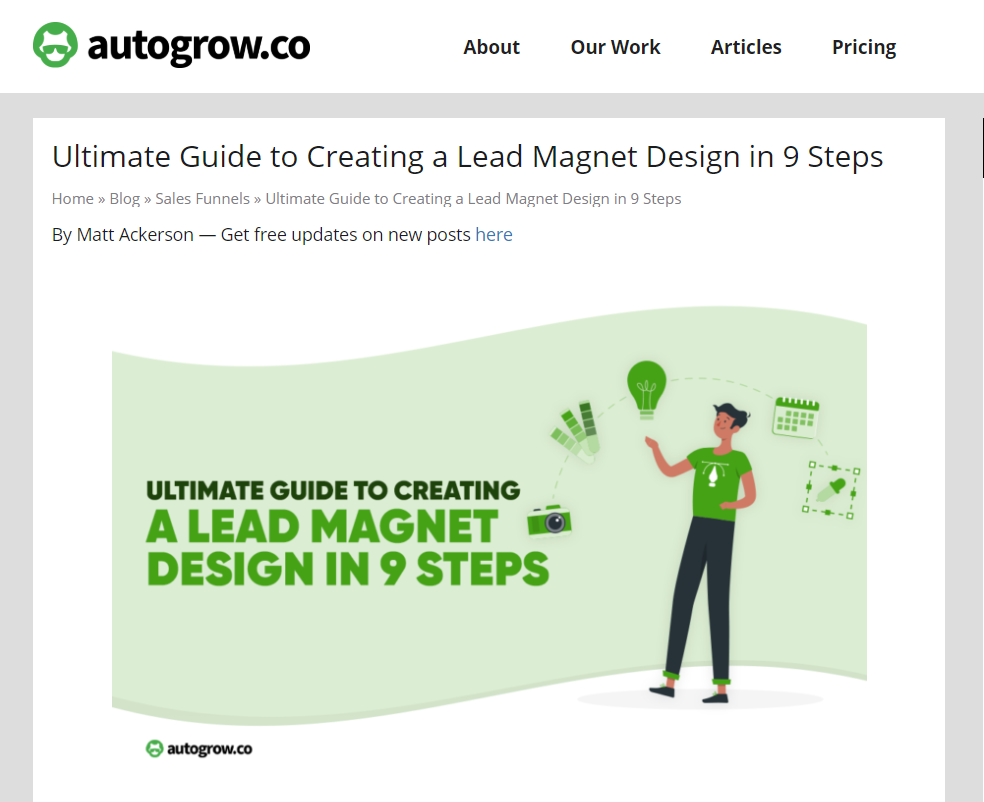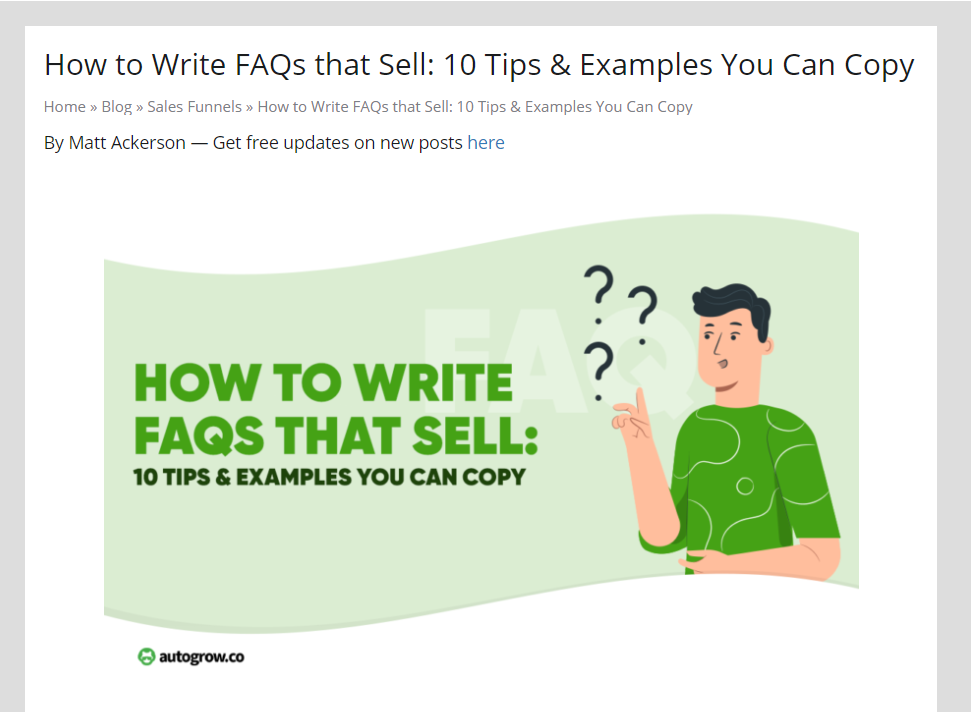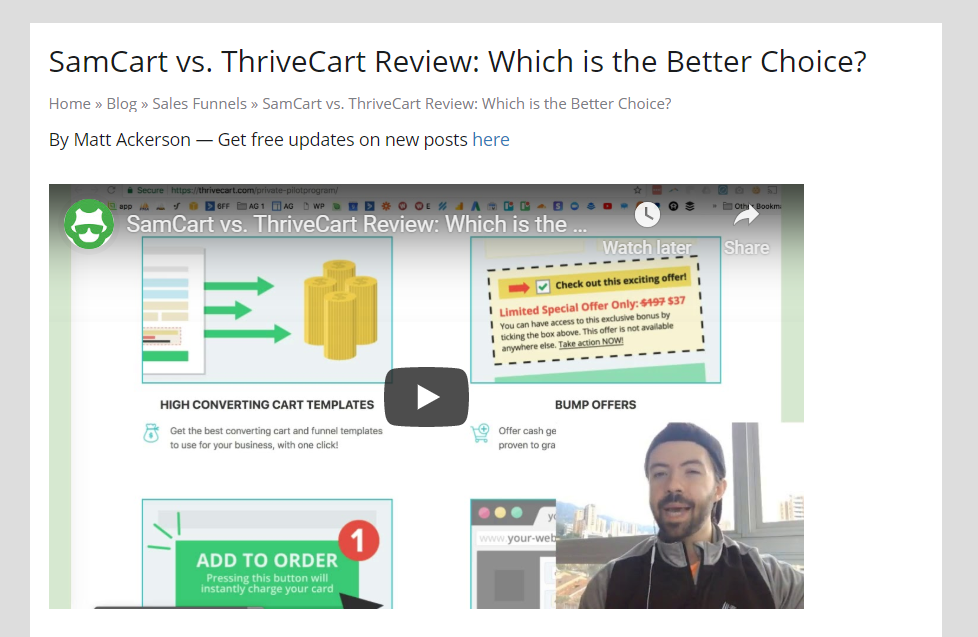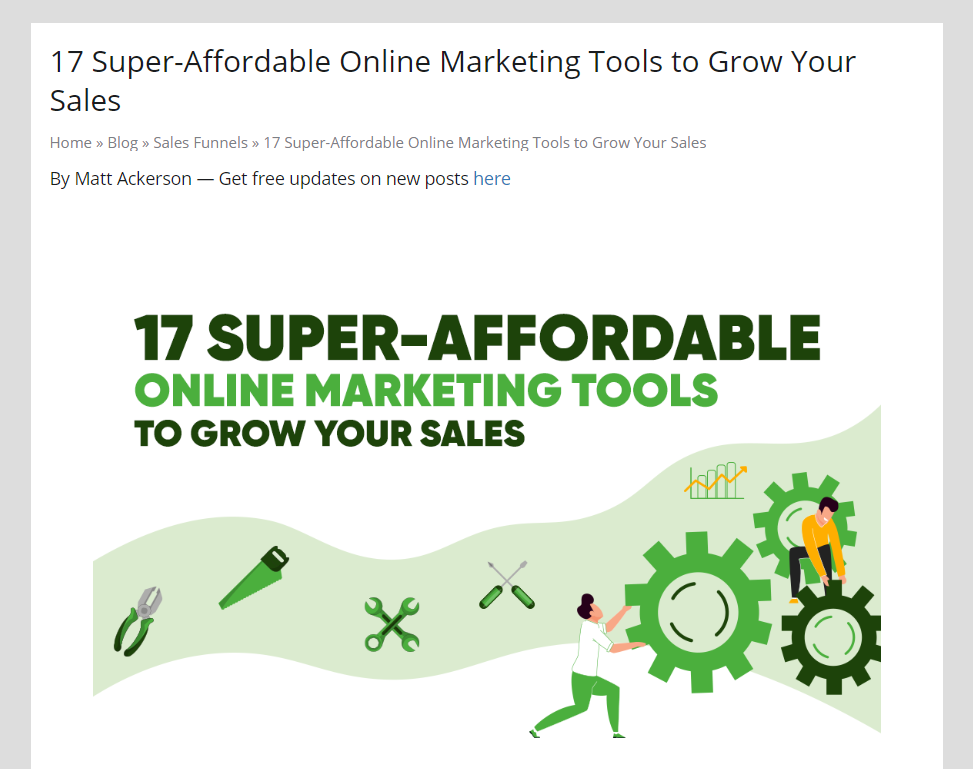17 Blog Post Types Proven to Generate Traffic [+Examples]

Traffic is like water.
And to use it, you need to create the channel to direct it where you want it to go (hint: your blog!).
Now, blog posts aren't a passing craze.
And they’re also like the meals you eat every day.
You don’t always eat the same food over and over, do you?
No, you vary up your meals with different options to make them more delicious and enjoyable.
The same thing should happen with your blog.
If you always write the same type of blog post, your audience will get bored. They’ll leave and head over to your competitors who do offer them what they want:
Fresh variety, a mix of different types of blog content.
When you add the right kind of variety to your blog posts, you’ll see an initial spike in traffic followed by a steady, continuous flow of traffic.
Sounds good, right?
That’s why in today’s article I’m going to show you…
- 17 types of blog posts that will generate traffic for your blog.
- Winning examples of the different kinds of blog posts you should model.
- And which is the best kind for growing traffic to your website and blog—as well as which one you should avoid.
By the way, if you’d like more traffic-related articles like this one, leave me a comment so I can know.
Ready to start getting sustainable, long-term traffic to your blog?

Type of Traffic You Want to Drive to Your Blog & Traffic You DON’T Want
Quick note before I dive deep into this article.
There are 2 types of traffic.
Organic and paid.
Organic traffic is the one you get naturally without having to try too hard (though getting a lot is no easy feat).
And it’s the type of traffic you want to drive to your blog and site.
Its biggest source of traffic is search traffic (through search engines like Google).
According to Statista, in 2019 search traffic generated 65% of total ecommerce sessions. About 33% was generated through organic search and 32% was generated through paid search.
A good chunk of that traffic is on mobile too. Take a look at the mobile share of organic search engine visits in the United States from 2013-2019, by platform.
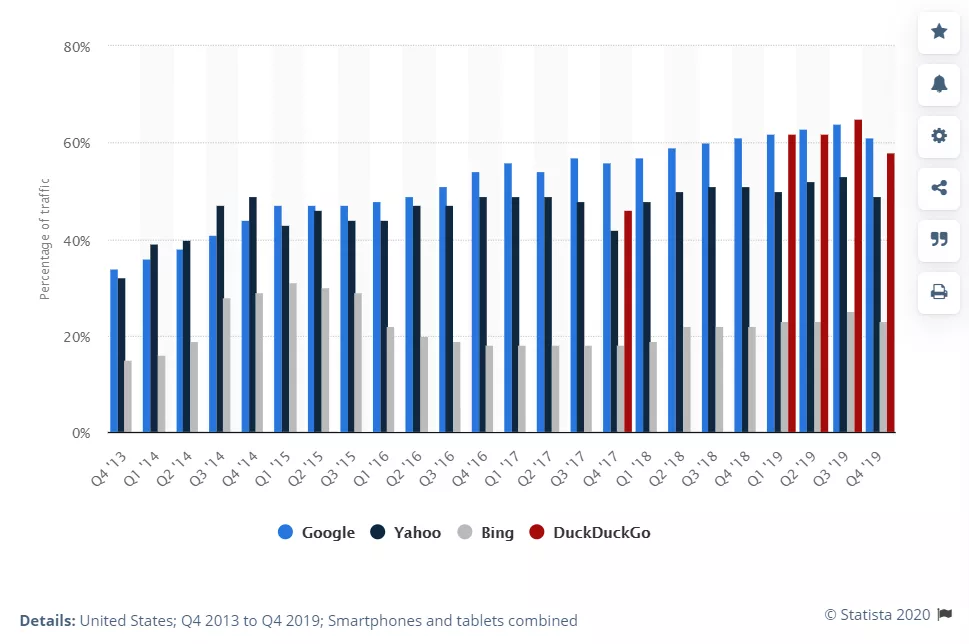
And see the mobile organic search visits by engine in the United States as of first quarter of 2020.
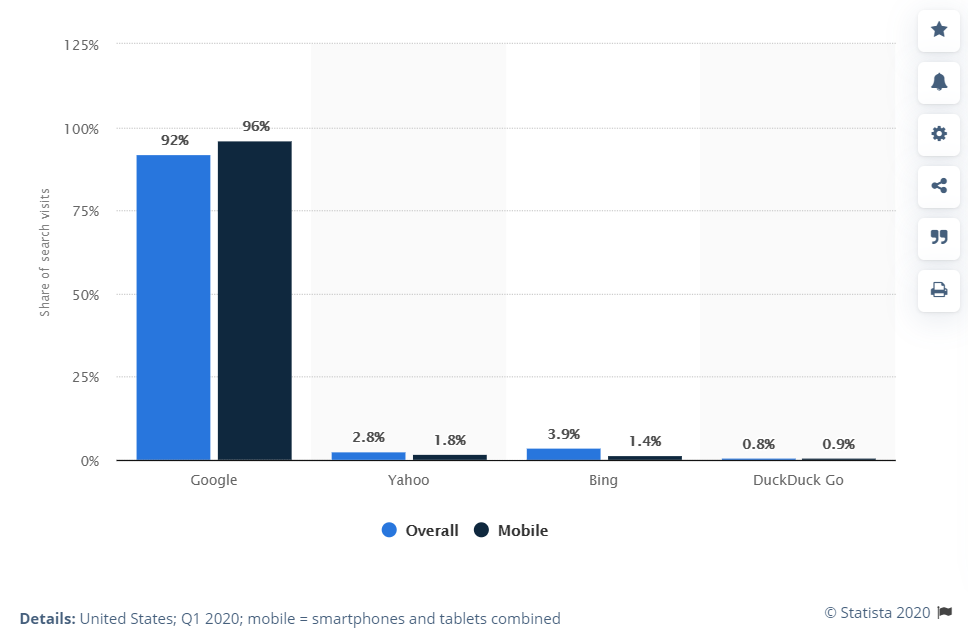
Now, organic traffic is the one you get when someone types specific keywords in Google search. And as a result, your blog post comes up in the results and people (hopefully) click on it.
See how when you type “high ticket examples” in Google search, AutoGrow’s article on “What Are High-Ticket Products and Services” is ranking #1?

That’s organic search in action.
On the other hand, paid traffic is the traffic you kind of force to drive to your site with ads such as Google Adwords, Twitter, Facebook, etc.
You can always pay for getting traffic, sure.
In fact, 33% of marketers use paid advertising to increase their brand awareness according to HubSpot.
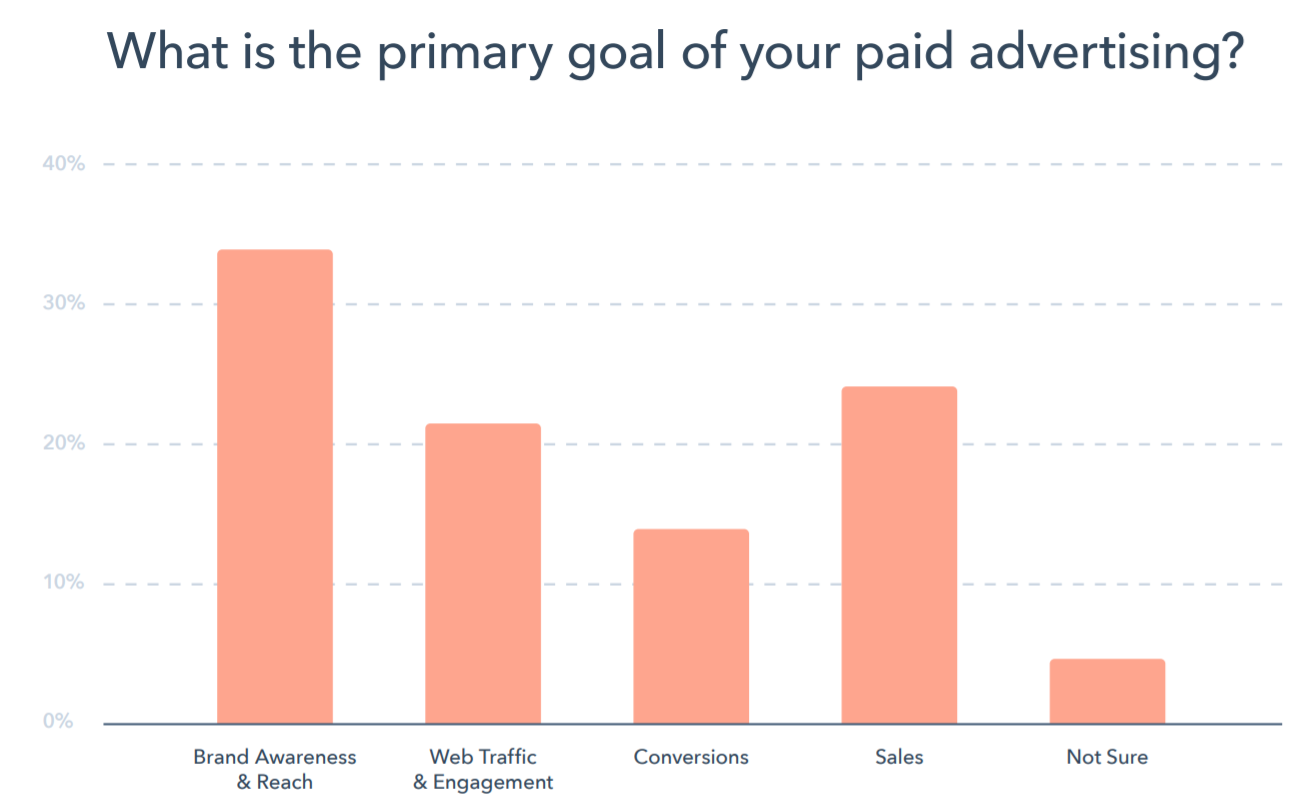
But getting organic traffic is a key part of your content strategy.
Because getting organic traffic actually means you’re getting more relevant and better qualified leads.
Now it’s time to dive into the 17 blog post types you should copy to drive more traffic from your specific niche or targeted audience…
Blog Post Example #1: AutoGrow’s Favorite—How-To Guides & Tutorials
This is AutoGrow’s favorite type of blog posts.
And it’s the one you should focus on when starting out your own blog.
“How-to” articles are easy to write and the perceived value is always high.
See how the article above clearly answers the question to the reader on how they will be taught to do something and in how many steps as well?
How-to articles will naturally get you the best return for your effort.
Why?
Because your audience is constantly looking to learn how to do something.
According to Google, 2 of their top searched phrases in 2018 were “How to vote” and “How to register to vote?”

And SEMrush’s data shows that “how-to” articles get 2x more social shares than other types.
For instance, tutorials and how-to articles are the simplest type of blog post you can create for your audience.
And trust me, they’ll thank you for it.
Something I teach you in my 6-Figure Sales Funnel training is that articles that get the most traffic are the ones that have a title that starts with “How to” or that are framed as tutorials.

We always write how-to articles and tutorials at AutoGrow. Check them out…
Neil Patel and OptinMonster do the same…
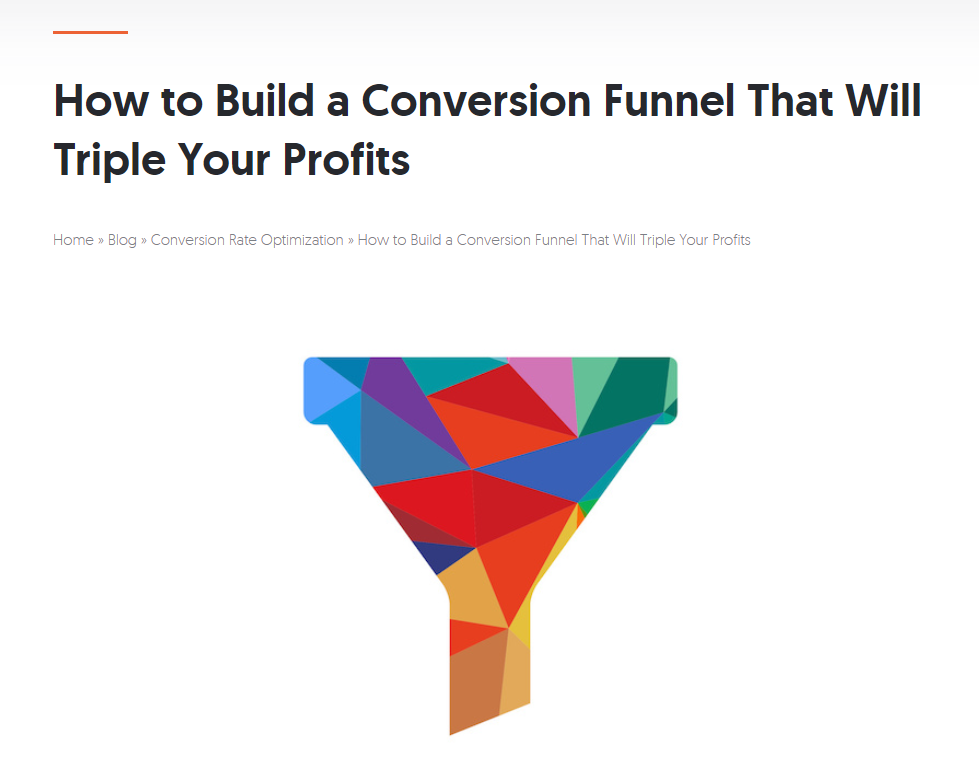

However, the key to getting more traffic with this type of blog post is to make it in-depth, add value to the reader, and make it useful for them.
And when crafting your tutorial, break it down into concise, actionable, and easy-to-follow steps.
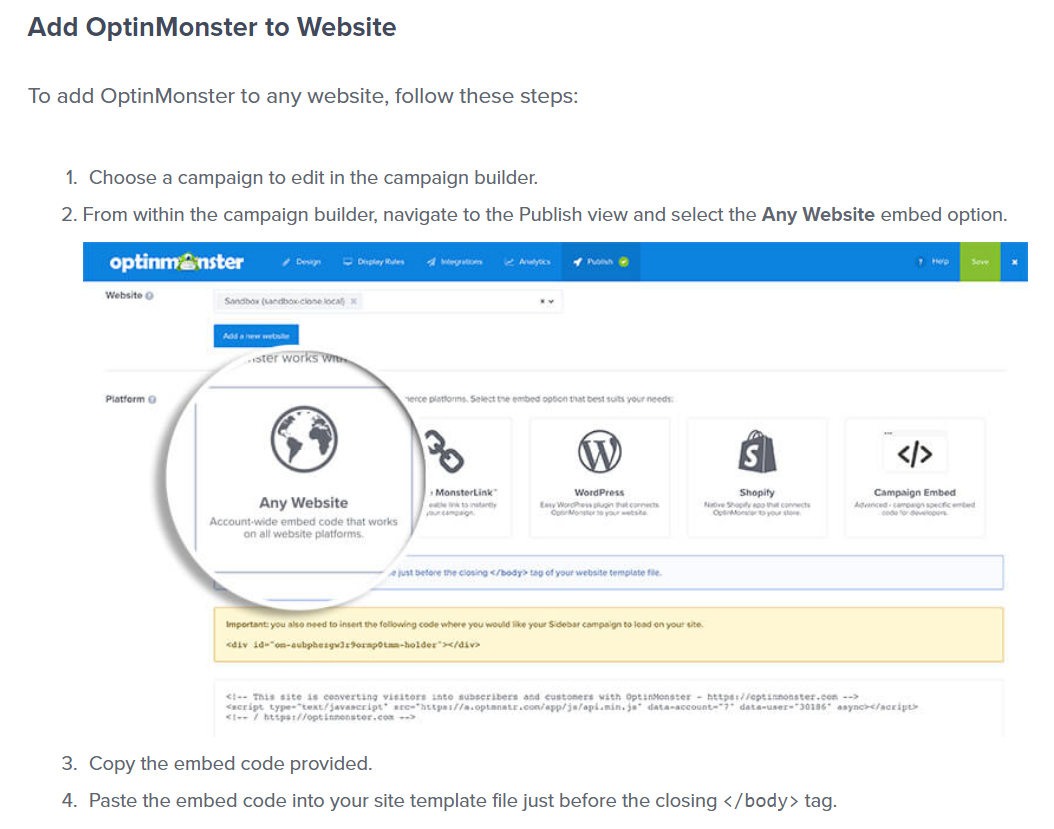
Avoid putting together boring long paragraphs that are far from being a tutorial.
Remember, your audience is reading your tutorial because they don’t know how to do a specific thing.
Blog Post Example #2: Case Studies—People Love Hearing About Other’s Success Stories
In this type of blog post, you leverage other entrepreneurs or companies’ data on how they achieved a specific goal in your post.
You take a real client and use their success story to demonstrate how your product or service can benefit others.
People love hearing success stories and learning about what goes on behind the scenes.
Case studies are fairly easy to write and are great for social proof.
Why? Because they bring numbers to life.
Case studies can actually increase sales by 185%.
We often use this type of blog post at AutoGrow.
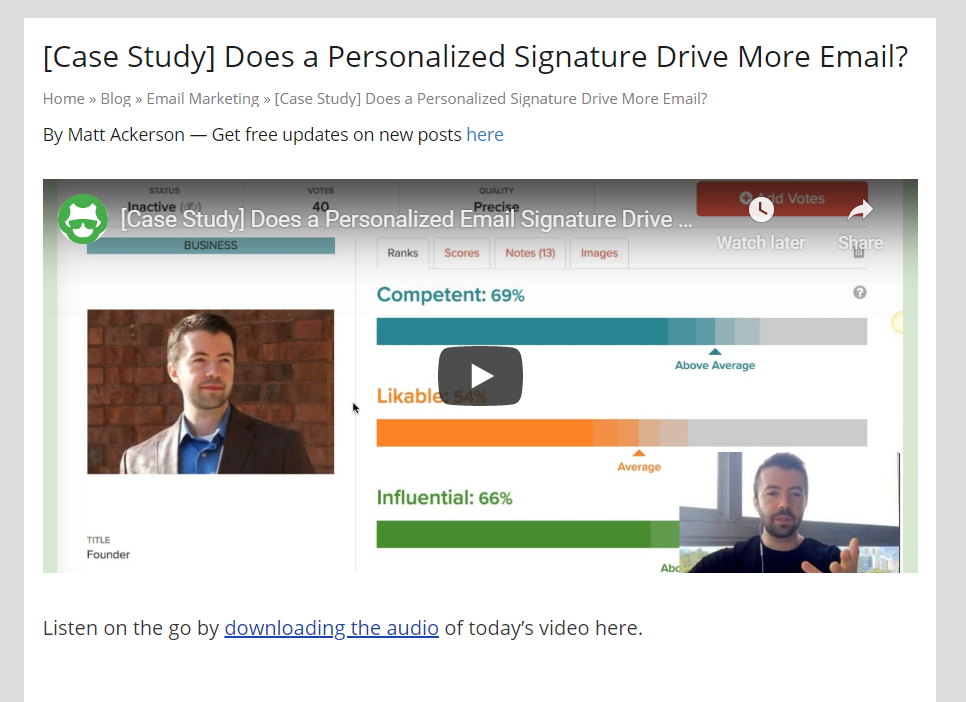
And it’s what companies like Quicksprout and Authority Hacker do too.
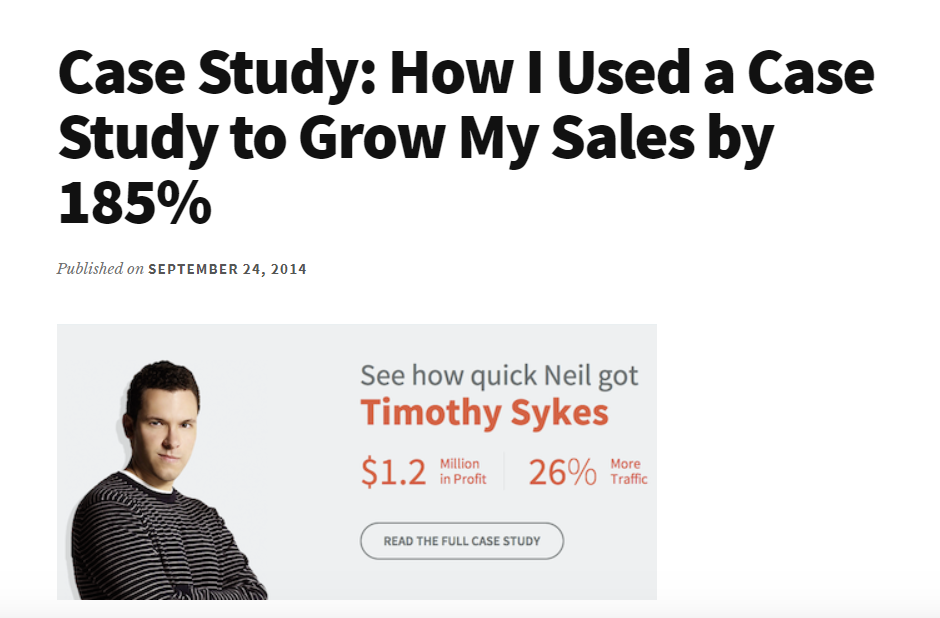

Although case studies may sound intimidating, time consuming, expensive, and like something you’re better off not getting involved with, they really aren’t that difficult to produce.
And they’re killer marketing material.
In fact, according to Content Marketing Institute, 77% of U.K. marketers use case studies as a content marketing tactic.

Something that makes your case study-based article attractive to your audience is the story involved in how someone achieved a specific goal.
Framed as a story, it helps prospects visualize themselves in that same situation.
Storytelling keeps readers hooked.
Especially since you’re telling them how someone achieved a goal similar to the one you’re looking to achieve.
Featuring case studies in your blog post also gives you the opportunity to present the problem that your audience is experiencing and the solution your product or service addresses.

Alex Turnbell, founder of GrooveHQ.com, tested writing blog posts with and without stories.

He discovered something you won’t believe.
People who saw the blog post with the story were 300% more likely to scroll (read) all the way to the bottom.
And the time spent on the page was 5 times higher.

Featuring case studies in your articles is as simple as taking the results of an experiment conducted by X company or person and writing the blog post around it.
And guess what? Case studies really aren’t that difficult to produce.
And they’re killer marketing material.
Blog Post Example #3: Interviews—Time to Get On Camera & Beat the Stage Fright
Interviews always convey a lot of value to your audience.
Why?
Because they feature experts in one specific area of your audience’s interest.
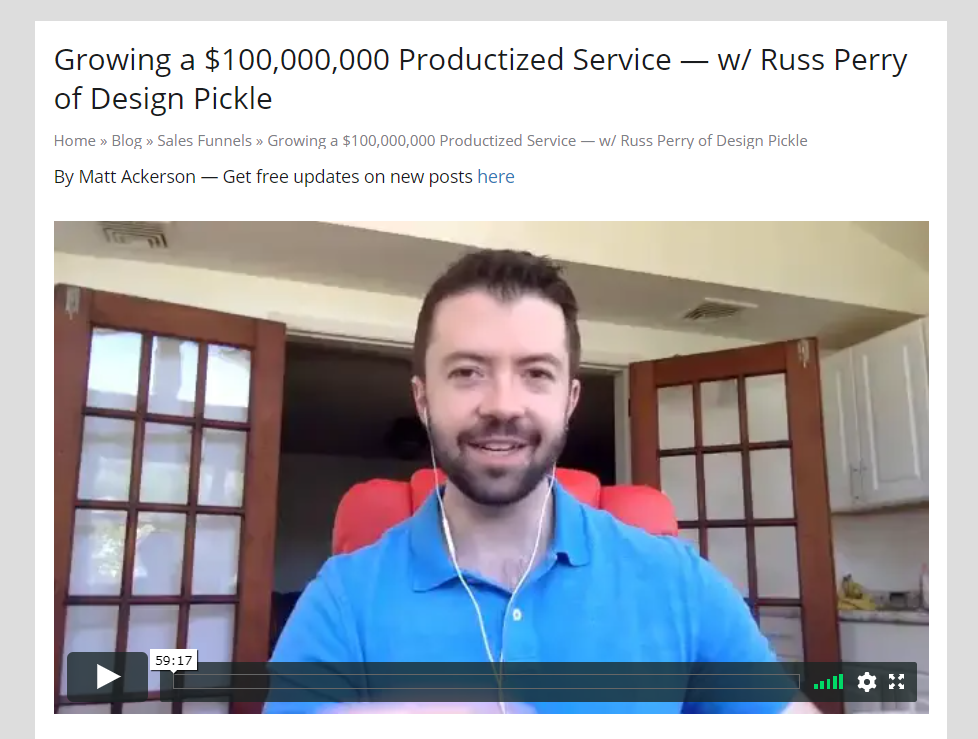
For instance, performing an interview doesn’t take a lot of time.
Just make sure you interview a person you strongly believe can add a lot of value to your readers.
Then, discuss current events with the person, ask them what they think is coming next in your industry, and any other relevant information for your audience. Or talk about business insights, lessons they’ve learned, sharing their expertise, etc.
But the goal here isn’t just to have an interview. Instead, it’s to actually talk about things that your readers want to know about and learn.
Then, you can turn the content of the interview into your blog post.
We like turning them into digestible takeaways that readers can easily learn from.
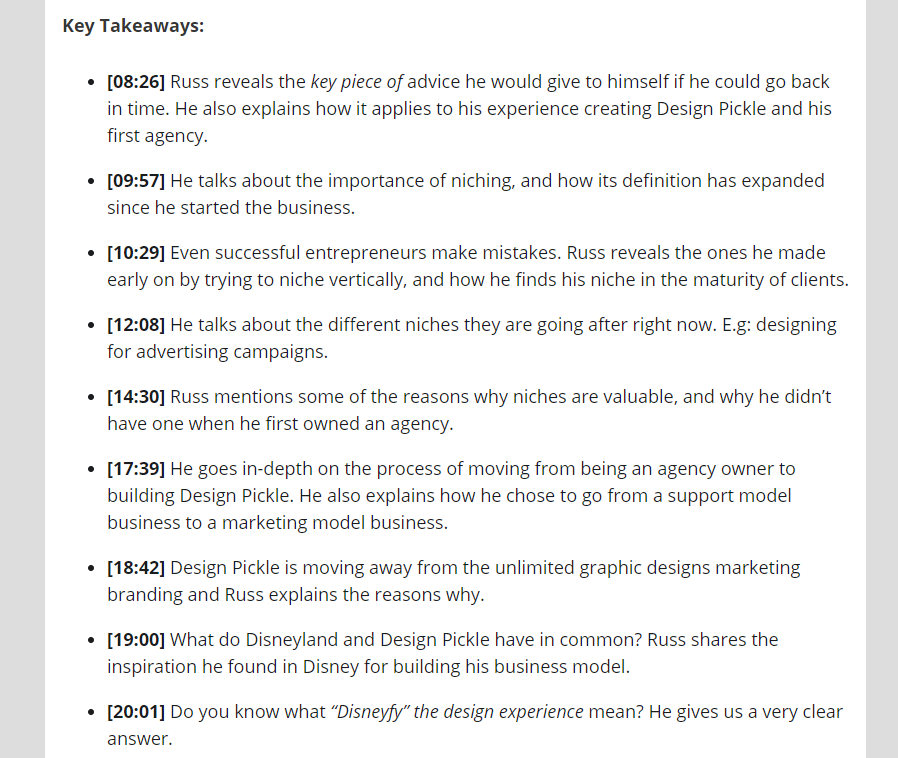
And we always add the videos so people can watch the interview rather than skimming through the key points covered.

Blog Post Example #4: Tips, Advice, & Golden Nuggets from Those Who “Know”
This type of blog post is really easy to compile.
This is simply a compilation of quotes extracted from an interview.


Sometimes you won’t want to get on camera to interview someone because of stage fright.
Or maybe because you simply don’t have the time to.
Instead, shoot an email to an expert on a topic, or an entrepreneur your audience wants to hear about.
Or contact them through social media.
Ask them a couple of questions about specific topics.
And then, add those quotes to your article.
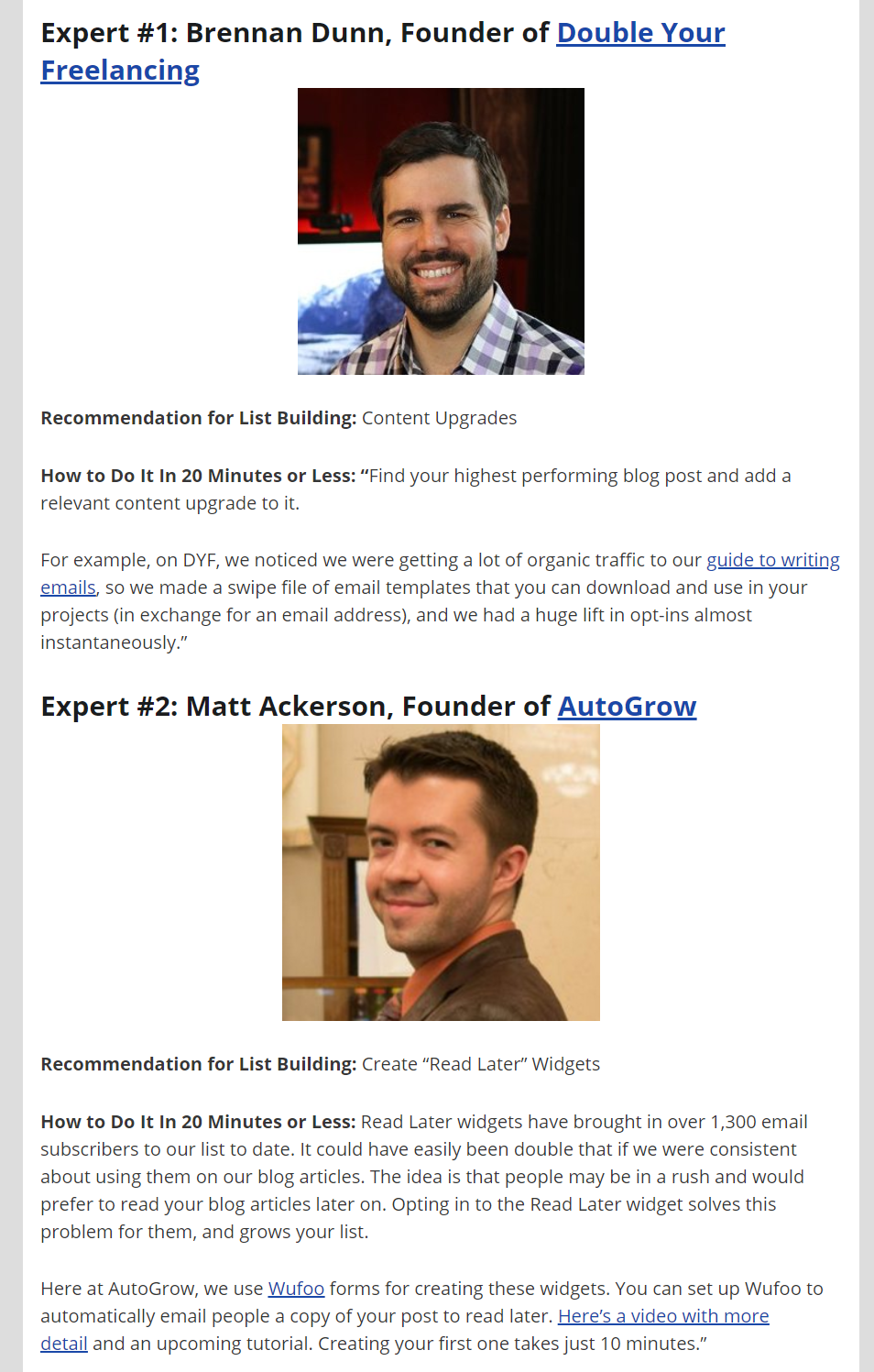
You can add them as full quotes like we did in this article…
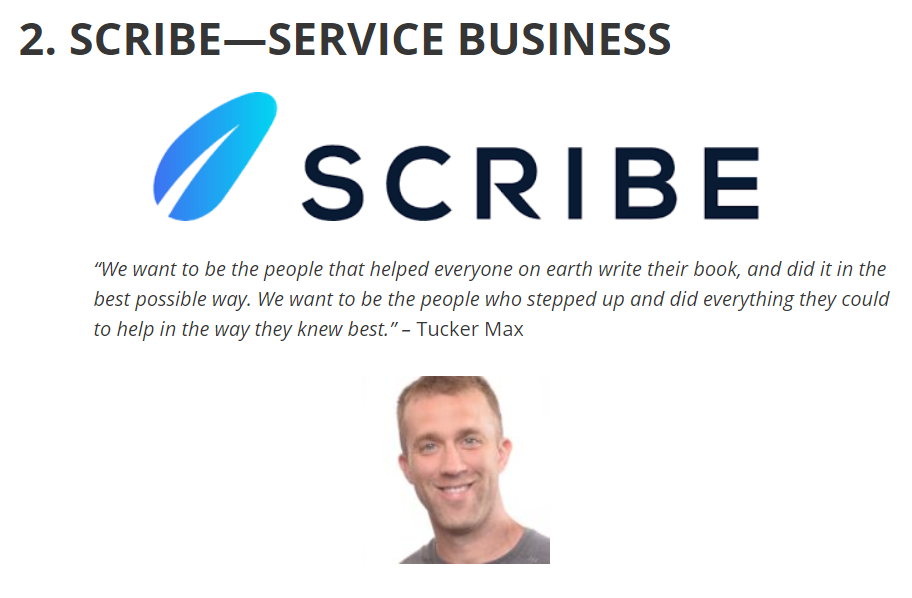
Or you can just add them in the form of questions / answers like this…

This type of blog post compiles those experts' knowledge, nuts and bolts, or their advice in a specific topic.
In return, your audience will absorb great content that you will simply put together in the form of an article.
You don’t need to do extensive research.
Blog Post Example #5: Latest News Related to Your Business Industry
I bet part of your daily routine is to skim the online news and search for the latest news related to your industry.
You want to know everything that’s going on in your business industry, what other entrepreneurs are doing, what magic tactics other marketers are using to drive more traffic.
Well, you’re not the only one doing that.
Your audience loves finding out those latest news related to their industry too.
For that, turn that routine of skimming through the latest podcasts, news, or anything related to your business industry into a post.
How?
By finding out what other companies are doing to thrive in the corona age, what products or services they’re launching, or what new marketing trends are there.
Blog Post Example #6: Current Events That the Whole World Knows About
Current events put everyone on the same page.
After all, we all live in the same world.
News is always happening.
News about economy, entertainment, history, culture, gastronomy—the world never stops.
There’s always an opportunity to turn current events into a blog post topic.
For example, who hasn’t read an article related to the coronavirus?
The coronavirus is literally on every business’ blogs.
I even wrote something about it not so long ago.
I asked some successful entrepreneurs what they were doing and how to market their brand during COVID-19.

We wrote about that because we knew that our audience wanted to read about that.
So from the latest movie released to a virus that beats up the economy, there’s opportunity for a blog topic related to current events.
And who knows, maybe your opinion on the topic could become the next viral article.
Blog Post Example #7: Checklists—Make Your Readers Check All the Boxes
I’ve written in the past why checklists are the perfect lead magnet.
Your readers love checking out content that is easy to digest.
They want to enjoy skimming through your blog and not invest a lot of effort in the process.
Checklists are great because they convey value to your readers and the content is easy to digest.
We actually like including checklists as an added bonus to our articles.

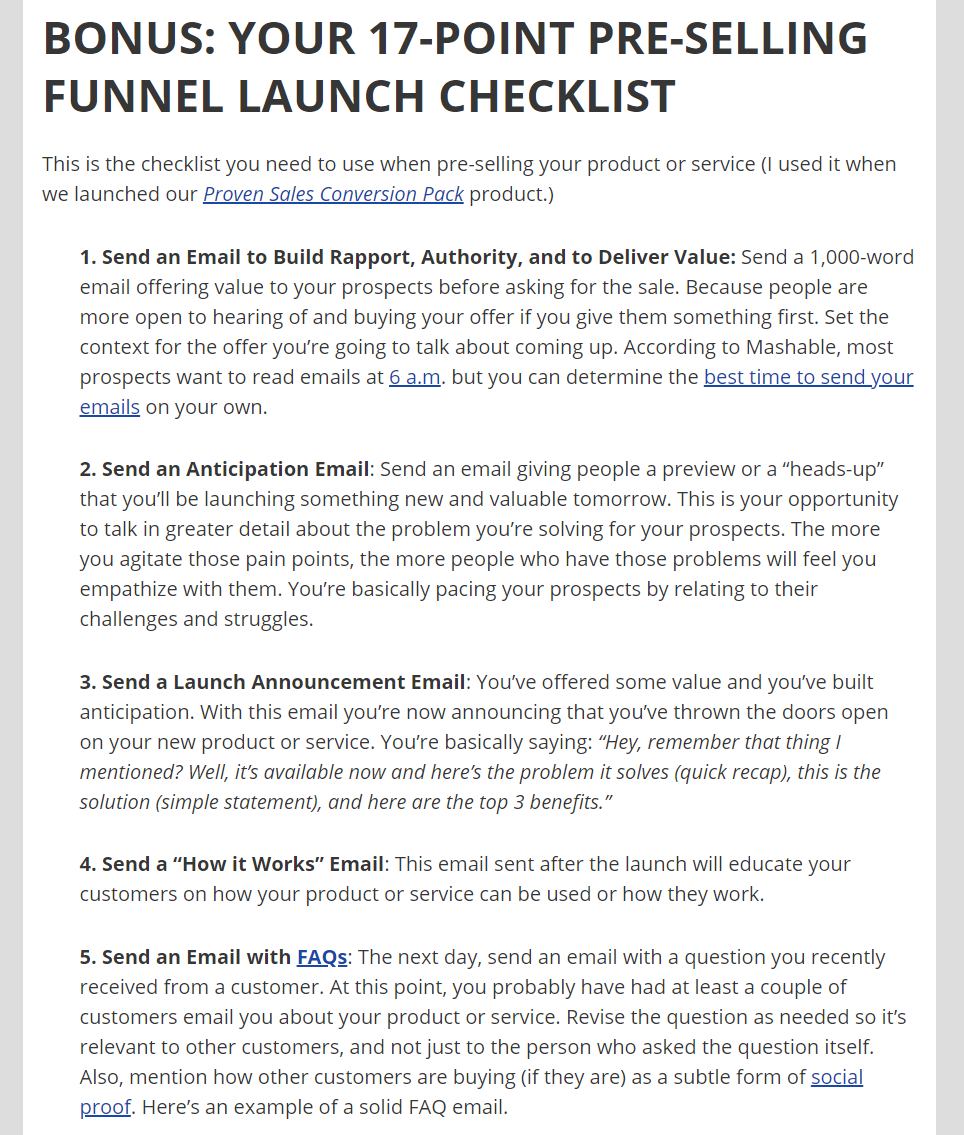
But, they make really great blog posts topics too.
All you have to do is take a topic you have some expertise on.
And then, break down the topic into short, concise, actionable items that your readers can actually cross out as they go through it.
For example, for writing each article, AutoGrow has a checklist that each content writer should actually cross out after they write every piece of content.
Items like “Did you proofread the article for typos?”
Or “Did you edit the article for SEO keywords?” help us get better at writing articles and delivering high-quality content.
For your audience, a checklist is as useful as it is for our content team.
For instance if you’re in the real estate industry, write a checklist about how to grow your income as a real estate agent.
Or if you’re a wedding photographer, craft a checklist on how your brides can nail the perfect posing for their wedding photos.
Blog Post Example #8: What No One Wants to Talk About(!) Controversial Topics
Controversial topics often get ignored.
People tend to put them under the carpet and don’t even want to mention anything related to them.
But actually, controversial topics don’t always have to be formal, taboo, polemical topics.
They can be fun to write about.
Just figure out which controversial topic can sort of adapt to your niche.
According to Harvard Business Review, slightly controversial articles get more comments than completely neutral ones.
There’s an example of an article titled “Eww! New Study Finds Expensive Hotels Have More Germs” from Yahoo Life.

They made an usual statement: five star hotels are actually the dirtiest.
For instance, if you’re selling your coaching services, don’t talk about euthanasia.
Topics should still be related.
Your audience may be sensitive to highly emotional topics and be careful when choosing your words wisely.
Find a topic that best fits your market niche, use the keywords around the controversy, and write it down.
Blog Post Example #9: Lists, Lists, Lists
You’re constantly making lists, aren’t you?
You go to the supermarket and you carry around that piece of paper with all the groceries you’re supposed to buy.
It’s Christmas time and you carry around a list of gifts you need to buy to a list of family members and friends.
You launch a new product and you have a list of “musts” you need to do before pushing the ignition button.
Who doesn’t write down lists?
Lists-based articles are among the most shared on the internet.
You can literally create a list of just about anything related to your business industry.
In fact, you’re reading one list-based article at this precise moment
The possibilities are simply endless.
In fact, SEMrush revealed that articles with list headlines (the ones that start with a number like “17 Types Blog Posts”) get 2x more traffic.

But there’s one downside to writing list-based articles.
There’s more competition for those titles in Google search.
For example, if you search for the name of this article in Google, you’ll see how competitors have the same topic with a different number on their lists.
This means your list post might not generate any substantial organic traffic if you fail to carry out due diligence.
The best way to deal with this issue is writing list-based posts with higher numbers.
For example, instead of writing “5 social media campaigns examples you can copy”, write “35 social media campaigns examples you can copy.”
See how most successful marketers nowadays write longer lists of items on their blogs?
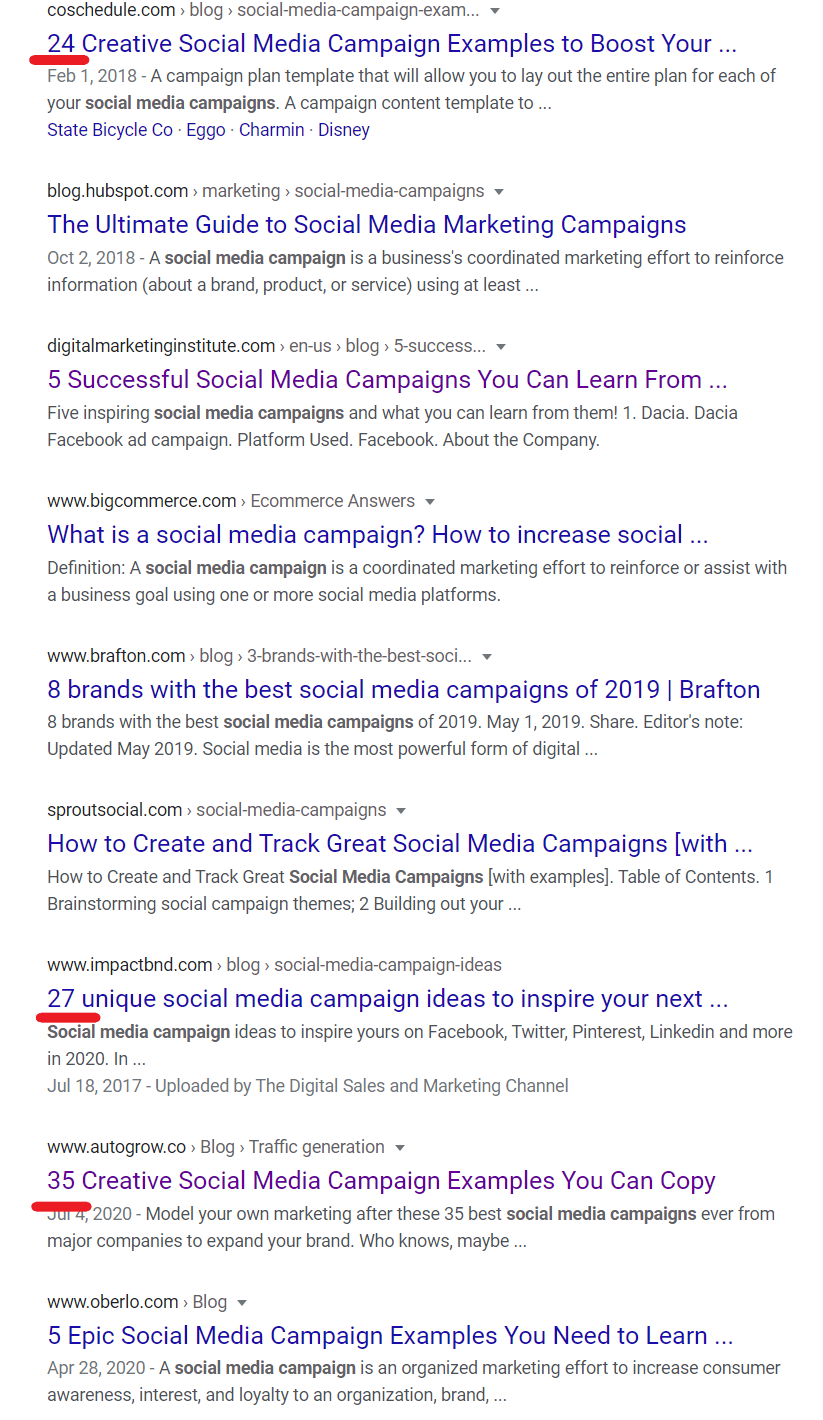
And by the way, always aim for odd numbers.
Recent studies by Content Marketing Institute revealed that odd numbers perform better than even numbers. And they can increase your click-through rate by 20%.
Blog Post Example #10: Comparisons
We’re constantly comparing things.
“I’ll drink a glass of Tropicana juice because Florida’s Natural tastes different.”
“I’ll buy a Tesla because (obviously) they’re superior to any other car manufacturer.”
“Should I try this email marketing automation tool, or should I try ActiveCampaign?”
We do that because we’re constantly looking to try higher quality products.
We want to try what’s better, more convenient, and more affordable for us and our businesses.
That’s why writing posts where you actually compare products, tools, companies, or anything is a great persuasive tactic for readers.
We actually wrote an article not so long ago comparing (based in my experience) SamCart and ThriveCart.
Not only did it get lots of comments, but ThriveCart’s founder actually left a comment too.

With an article like that, you try to teach readers on why a specific product or service is better than the other.
And even though you’re really not sponsoring anyone, you’re giving your real opinion about a product or service based on your experience or on simply researching.
For this type of blog post, you only need to write the article comparing two products or services.
And explain your thinking behind it.
Blog Post Example #11: Infographics
Everyone loves infographics (info + graphics).
A study by Unbounce shows that, in just 2 years, searches for infographics increased by 800%.
That’s because they’re easy to digest, visually attractive, and most importantly, they add a lot of value to the reader.
In fact, blog articles that include infographics generate an average of 178% more inbound links and 72% more views than all other posts according to HubSpot.
The key to offering infographic-based blog posts is you want to attract more people with a nicely designed chart or graph filled with valuable information.
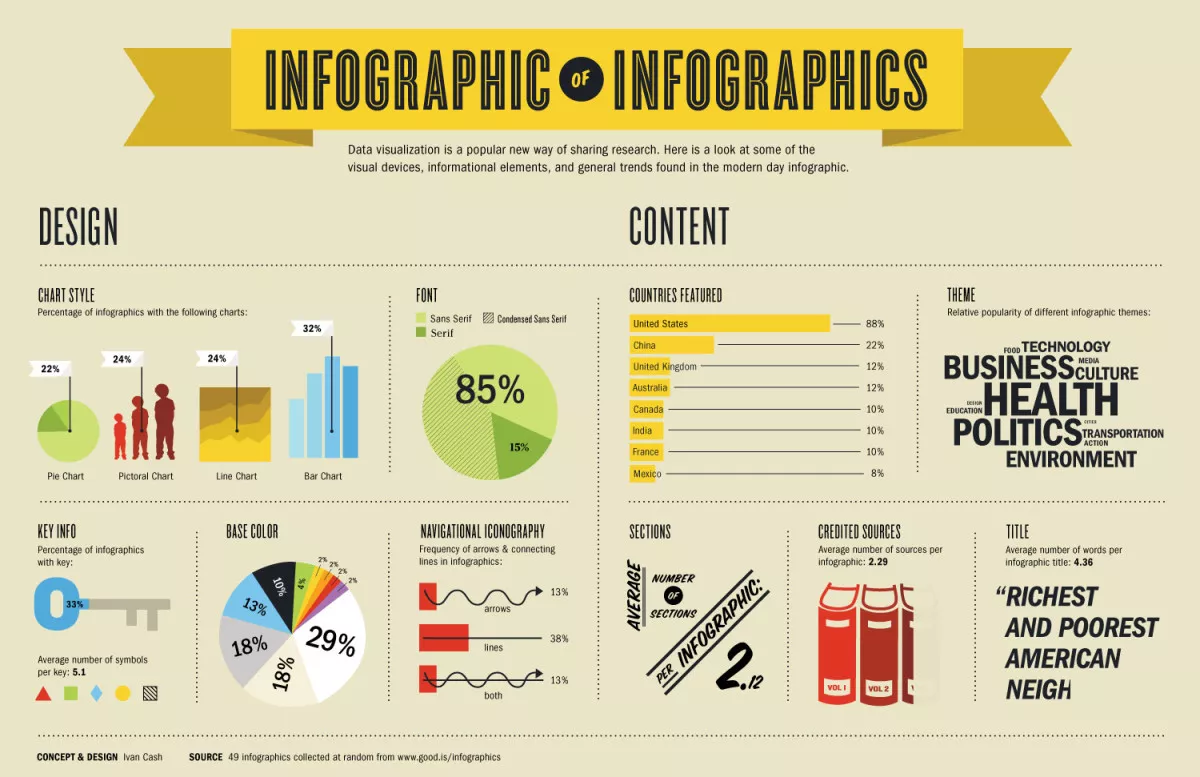
You see, well-written articles are backed by research and data from trustworthy sources.
But compiling all that information into one nicely designed infographic turns out to be a fantastic resource for anyone doing research for an article.
Good visuals make your brand stand out.
And as a matter of fact, Neil Patel’s traffic for QuickSprout and KISSmetrics’ organic traffic grew when they started using infographic on his blog.
In fact, over the course of 12 months, he saw that the articles with infographics received 35.1% more traffic.
Blog Post Example #12: Guides
We love making guides for our audience because we know they love them.
Especially for beginners.
Why?
Because when you’re starting out, you don’t have all the necessary knowledge in a topic.

Beginners are anxious and thirsty for learning more.
And with a guide tailored to their needs, you’ll be teaching them step-by-step how to do something or how to achieve a specific goal.
In it, you’ll be mentoring your audience and explaining to them what a specific thing is, how they can use it, the steps to use it, as well as examples and benefits.
Blog Post Example #13: Tools
Your audience is always on the quest for knowing new trends and what are the latest tools that will simplify their work for them.
Nowadays, most businesses’ processes are systemized by a long list of tools.
For example, if you’re own a digital marketing agency, then you need to know which are the best tools for building landing pages (which is Leadpages by the way), or the best platform or email marketing (ActiveCampaign for sure).
You need tools, tools, and more tools.
And for this, there’s nothing better than putting together a list of recommendations or suggested tools like in the example below.
This will not only help your audience, it will also be helpful to you (business owner) to identify which of the tools and software in the market better suits your needs.
For instance, talk about the tools you’ve tried and the ones you haven’t tried yet.
You don’t have to do a full review about a specific tool or go in-depth. It’s just about listing them, giving a short review of the tool, and why you’re recommending it.
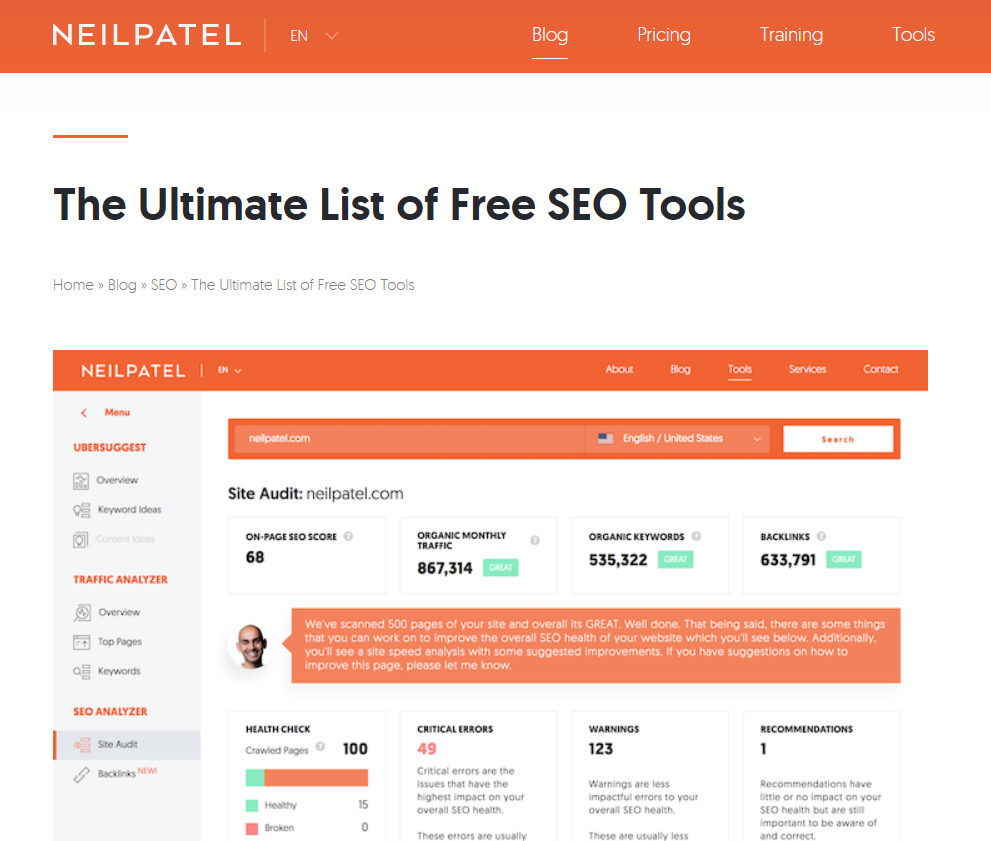
Maybe you tried a Mac over a PC, or the AutoGrow Web App over any other management software tool.
Whatever you decide, I encourage you to put together a list of those recommended tools.
Blog Post Example #14: Guest Blogs
If you’re spinning on a hamster wheel trying to come up with new titles ideas and you have no luck, don’t worry.
Consider inviting a guest blogger to write an article for your blog.
For this, reach out to bloggers you think have potential and ask them if they would be willing to guest blog for you.
This will not only help you generate new content ideas for your blog, but it will also let you offer to your audience a different style of it.
The guest writer may introduce new ideas to your blog that can end up increasing your traffic.
Blog Post Example #15: Transcript Posts
One of the easiest ways to offer value to your readers through your blog is by transcribing any podcast, interview, or call.
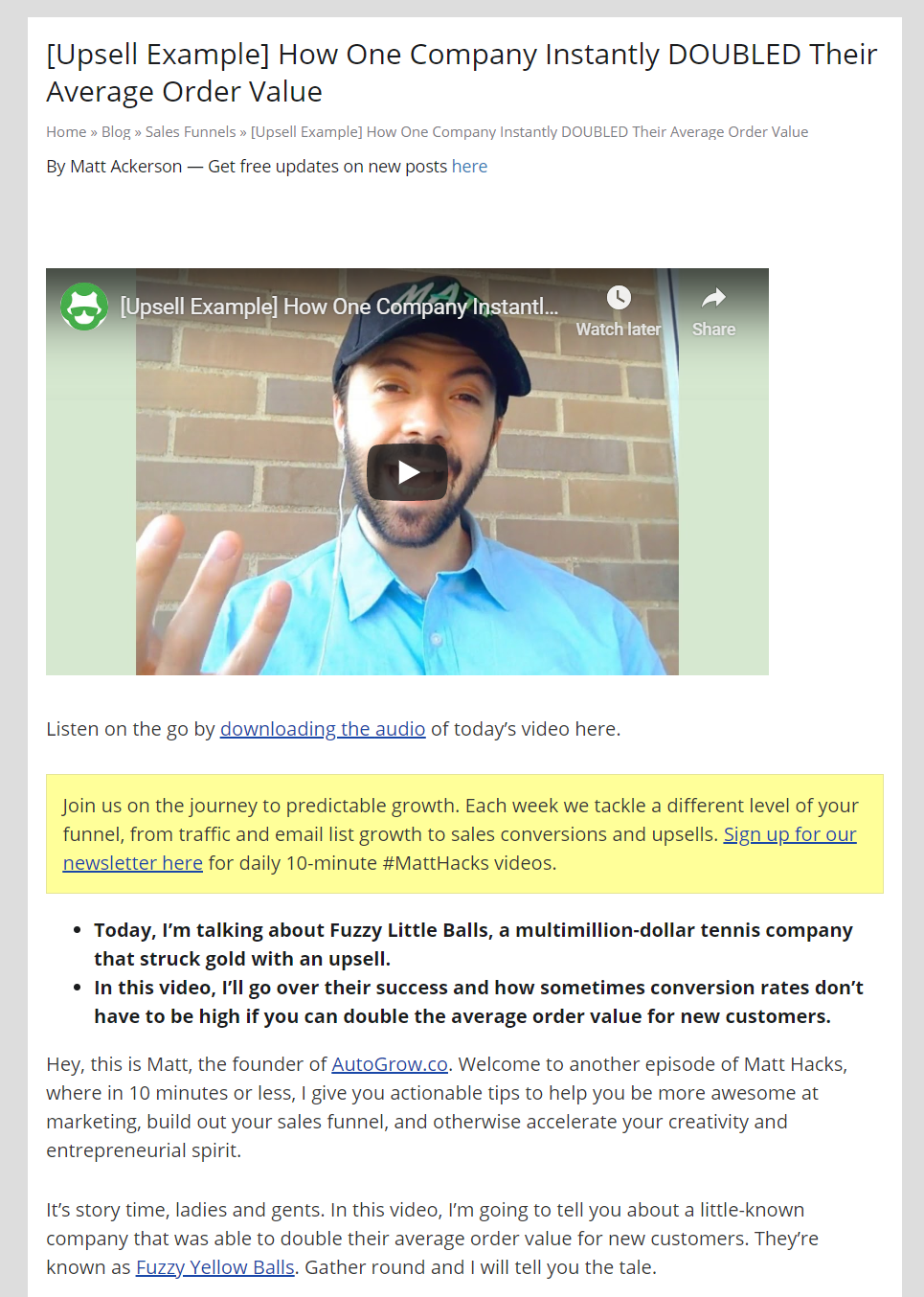
Sometimes you have great content in the form of video or audio.
Perhaps you interviewed someone, or gave a conference on a specific topic.
There are many different transcribing software that turn your audio recording into text.
Just make sure to proofread the transcription to see if it was accurately transcribed.
Blog Post Example #16: Products & Services Reviews—Everyone Wants to Know How Good or Bad a Product or Service Is
Who doesn’t (always) look for products or services reviews before purchase?
We all do at some level.
We ask for referrals, we look for the 5 yellow stars in Amazon.
We all want to know how good or bad a product is before trying it out.
So does your audience.
Your audience wants to know if they should trust a specific product or service.
And you are a trustworthy source for them. That’s why they keep coming to your blog in the first place.
For instance, write down the pros of cons of any product or service you have tried.

The rule of thumb is to be honest.
If you’re an affiliate to any product and have actually used or tested the product, you’re in the right position to review it.
But don’t try to be too salesy because you’re not trying to get anyone to buy whatever you’re reviewing.
You're sharing your opinion so your readers can make an informed decision on whether or not to buy that product or service.
And while it may not seem like a lot of work for you to share your opinion, it can bring in a lot of traffic.
Make your review-based article insightful and simple to understand—your mindset should be to help others
If you can teach others what they need to know, they’ll trust you.
Blog Post Example #17: Statistics
Every valuable piece of content you put out for your specific market niche should be backed up by data.
And the same way you’re reading this article because you’re looking for valuable content, your readers want to know too about the statistics behind a topic.
That’s why putting together a list of stats in one article, is a helpful resource for your readers.
Numbers and statistics lend credibility to your copy and make your claims more persuasive.

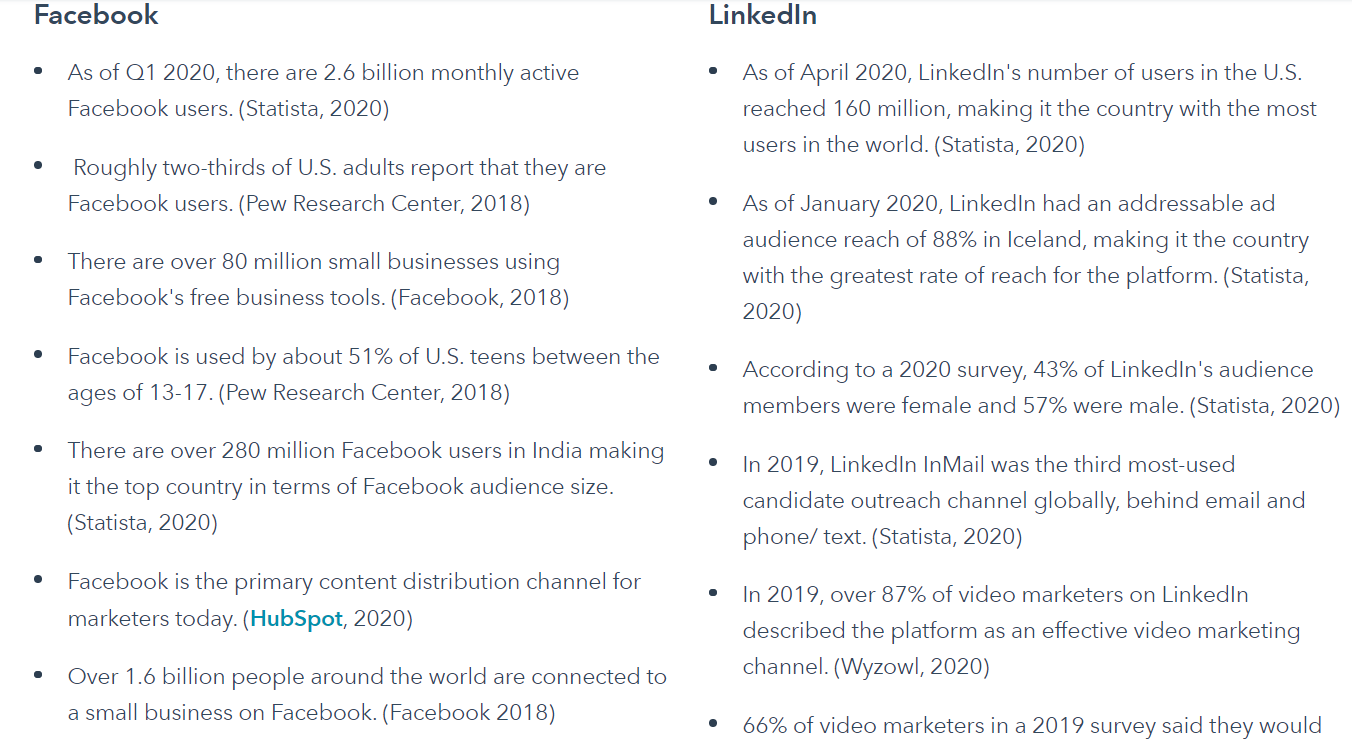
That way they don’t have to jump from one post to the next one researching and looking for what they want.
They can just find everything they need in just one place.
BONUS: Blog Post Example #18: Recycle & Rewrite Old Articles
There’s always room for improving old articles.
And there’s also room for updating your content that is out of date.
As long as your content is valuable, it won’t be a passing craze.
It will actually remain valuable and useful for your Google ranking and for your readers.
All you have to do is look for past articles that are still getting a lot of traffic (use Google Analytics for this).
Look for areas you can improve or rewrite to update it and make it better.
Maybe the stats and research cited are from 5 years go, or the title of your article is from 3 years ago.
As long as its content is valuable and has some traffic, update it and boost its presence in the web with revamped and new content.
Conclusion
When it comes to writing an article for a specific niche that generates traffic, there isn’t a one-size-fits-all.
There are plenty of types of blog post examples you can take as inspiration and model it for your own business.
And this is the main thing I hope you take away from this article: create valuable content for your target niche regarding the type of blog post you decide to create.
Once you understand that traffic is just like energy or water, and you just need to create pathways to direct it where you want it to go, the rest is easy.
Once you understand this, you’ll see organic traffic coming into your blog, traffic turning into leads, and leads turning into paying customers.
Now tell me something, what are some other types of blog posts you have written?
Have you found this more niched article targeted for you helpful?
Would you enjoy reading more articles related to your blog and content and how they can be a great source of traffic?
I want to know your thoughts.
Let me know in the comments below what you liked about it.
Keep AutoGrowin’, stay focused.



